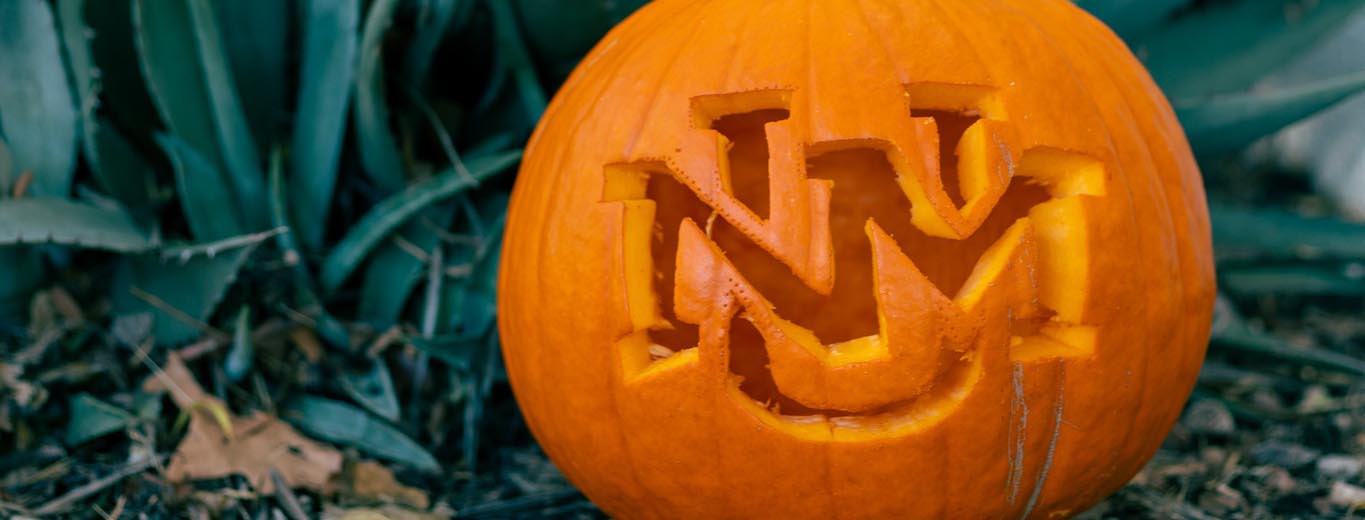Cannabis candy looks, for the most part, like any other candy: Chocolates, hard candies – even gummies shaped like gummy bears.
With recreational cannabis newly legalized in New Mexico (as of April 2022), the New Mexico Poison & Drug Information Center has seen an uptick in cannabis-related emergency calls, particularly during this Halloween season.
“We had zero cases one week, and then suddenly 10 the next,” says director Susan Smolinske, PharmD. “Six of those cases were children, and we know for sure that at least one was an incident of a child who thought they were eating Halloween candy.”
Trick-or-treat traditions may vary, but most of us share at least one common memory – the feeling of coming inside from a brisk fall night, giddy with excitement and ready to take stock of our newly-acquired riches. Upending our plastic pumpkin bucket/tote bag/pillowcase, the seemingly endless bounty of precious candy spills forth…
Then comes the part children find most tedious but parents and guardians know to be essential: Sorting through the candy mountain for pieces and items that must be thrown away. Torn wrappers, open packages, anything that looks dirty or tampered with – it all has to go in the garbage.
This year, parents and guardians are advised to add a new culprit to their list of what to look for – cannabis candies that may look like Halloween treats.

The concern is that in the frenzy of sorting through all their candy to share and trade, a child might mistake grandma’s cannabis chocolate bar as part of their haul.
“To be clear, we’re not worried that people will be handing out marijuana candies to children who are trick-or-treating,” Smolinske says. “The concern is that in the frenzy of sorting through all their candy to share and trade, a child might mistake grandma’s cannabis chocolate bar as part of their haul.”
Jacqueline Kakos, health education consultant for the N.M. Poison & Drug Information Center, points out that it’s also a season for lots of sweets and treats at school. To help prevent accidents, teachers can keep an eye on any candy kids might bring from home to share with the class, and parents can advise their children to save shared candy until they get home and an adult can look at the wrapper.
“At this point, most people know to look for CBD or THC,” Smolinske says. “But there are new markers, like Delta 8 or Delta 10, HHC . . . Basically anything that looks like alphabet soup is a red flag.”
For older kids, adults can teach them how to avoid cannabis, in much the way we teach our kids about not drinking alcohol. Parents can tell their school-age children something along the lines of, “This is special grownup candy, it might make you sick.”
Kids under the age of five are at the highest risk, because they typically can’t read labels and tend to put everything in their mouths.
Kakos also wants to remind people that while CBD is less toxic than THC, there is still a toxic dose. “All CBD products, including chewable CBD pet “chill pills” and the like, should be stored up high and out of sight,” Kakos says.
If a child does ingest cannabis candy, the abnormal behavior to watch for is a lot like when someone ingests alcohol: stumbling, slurred speech, red eyes, fast heart rate. For the littlest kids it’s potentially even more serious – they can end up hospitalized on a ventilator.
To help keep kids safe, here are some simple steps adults can take:
- Store all cannabis products out of sight, beyond the reach of children and pets and away from other non-cannabis food and beverages.
- If you have a medication lock box or bag, keep all cannabis there, too.
- Store in child-proof or child-resistant packaging.
- If you transfer cannabis candy from its original packaging, KEEP THE LABEL. This will be an enormous help to Poison Control if you do need to call.
- If you suspect a child has ingested cannabis, call the New Mexico Poison & Drug Information Center immediately.
“We want parents to know we are a safe place to call, and we do not involve police when someone contacts us for help,” Smolinske says. “The health of the children comes first.”
If you’re worried a child in your care has ingested cannabis, call the Poison Hotline at 1-800-222-1222.
“Adults can also use the webpoisoncontrol.org app on their phones or online to determine whether or not they need to call the poison center,” Kakos says.
You can learn more about the New Mexico Poison & Drug Information Center on their website.
